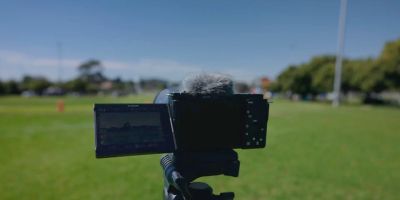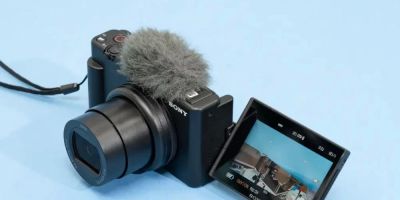
- Understanding the Importance of Camera Choice for Self-Portraits
- Key Features to Look for in Cameras for Creative Self-Portraits
- Top Recommended Cameras for Creative Self-Portraits and Their Strengths
- Real-Life Examples and Stories from Self-Portrait Photographers
- How to Maximize Your Self-Portrait Experience with Gear and Tips
1. Understanding the Importance of Camera Choice for Self-Portraits
Creative self-portraits have evolved from simple snapshots to a sophisticated form of personal storytelling. Choosing the right camera is crucial because it directly affects the quality, style, and overall impact of your images. Unlike casual selfies taken on smartphones, creative self-portraits demand cameras that offer better control over lighting, focus, and composition.
When selecting a camera, it’s important to consider not only technical specs but also how the device supports your creative process. For example, does it have a flip-out screen to help you frame shots when you're in front of the camera? Can it handle low-light situations well? Does it offer manual controls to adjust aperture, shutter speed, and ISO?
Understanding these elements can elevate your photography from basic to professional-looking, helping you express your unique personality and style through each image.
1.1 Why Self-Portrait Photography Requires Specialized Equipment
Self-portrait photography is different because you are both the photographer and the subject. This dual role means your gear needs to compensate for the lack of a dedicated photographer. Features such as remote shutter release, fast autofocus, and reliable face detection become critical to achieving sharp, well-composed shots.
Additionally, self-portraiture often involves experimenting with lighting, angles, and poses, so a versatile camera is invaluable for creative freedom.
2. Key Features to Look for in Cameras for Creative Self-Portraits
When hunting for the best cameras for creative self-portraits, there are several technical and ergonomic features to prioritize:
2.1 Articulating or Fully Flip-Out Screens
A screen that flips out and rotates is one of the most practical features for self-portrait photographers. It allows you to see your framing and focus while posing, giving you full control without needing guesswork or multiple trial shots.
2.2 Autofocus Capabilities and Face/Eye Detection
Advanced autofocus systems with face and eye detection are game-changers. They ensure your face stays sharp even if you move, so you don’t miss that perfect expression. This is especially useful when using a timer or remote shutter.
2.3 Manual Controls for Creative Flexibility
Manual control over aperture, shutter speed, and ISO lets you tailor your exposure to match your vision, whether you want a shallow depth of field for a dreamy background blur or a crisp focus throughout.
2.4 Portability and Battery Life
For photographers on the go, a lightweight camera with long battery life helps you capture spontaneous moments anywhere. Being able to carry your gear comfortably encourages more frequent self-portrait sessions.
2.5 Connectivity and Remote Shooting Options
Wi-Fi, Bluetooth, and app connectivity make it easier to control your camera remotely from a smartphone or tablet. This feature allows more precise timing and creative poses without rushing.
3. Top Recommended Cameras for Creative Self-Portraits and Their Strengths
Based on the above criteria and real user experiences, here are some of the best cameras currently favored by creative self-portrait photographers:
3.1 Sony Alpha a6400
This mirrorless camera stands out for its exceptional autofocus system, including real-time eye tracking. The fully articulating touchscreen is perfect for framing your shots, and its compact size makes it portable without sacrificing image quality.
3.2 Canon EOS M50 Mark II
Canon’s EOS M50 Mark II is widely praised for its user-friendly interface and great color science, making skin tones look natural and flattering. It also supports vertical video, a bonus for social media creators focused on self-portraits and vlogging.
3.3 Fujifilm X-S10
Known for its excellent in-body image stabilization and film-like color profiles, the X-S10 helps you achieve creative, high-quality self-portraits even in challenging light. Its vari-angle screen and intuitive controls make it highly versatile.
3.4 Panasonic Lumix G100
Designed with vloggers and self-portrait enthusiasts in mind, this camera offers impressive audio capture and a flip-out screen. It’s an excellent choice if you want to combine still photography with video.
For those who want to explore a wider range of options or require personalized recommendations, Photo Studio offers expert advice and access to the best products tailored to your needs.
4. Real-Life Examples and Stories from Self-Portrait Photographers
One inspiring example comes from photographer Emma, who transformed her self-portrait work after switching to a Sony Alpha a6400. Before, she struggled with blurry images due to inconsistent focus, but the eye-tracking autofocus allowed her to create sharp, expressive portraits with ease. Her story illustrates how investing in the right camera can dramatically change the creative possibilities for self-portraiture.
Another story is from Mark, a social media influencer who credits the Canon EOS M50 Mark II for boosting his content quality. The camera’s color reproduction and vertical video support helped him engage a larger audience, proving that the right gear can have a tangible impact on your personal brand.
These stories show how the best cameras for creative self-portraits do more than just capture images — they empower creators to tell their stories with confidence and clarity.
5. How to Maximize Your Self-Portrait Experience with Gear and Tips
Beyond choosing the right camera, maximizing your self-portrait results involves some practical strategies:
5.1 Mastering Lighting
Good lighting is the foundation of every striking self-portrait. Natural light from a window or softbox lighting can add depth and mood. Experiment with backlighting, side lighting, or even colorful gels to create unique effects.
5.2 Using Remote Shutter or Timer
Remote shutter release or a camera timer allows you to compose and pose without rushing. Some cameras even offer app-based remote control, so you can preview and shoot from a distance.
5.3 Background and Composition
Consider your background as part of the story. Clean, minimalistic backgrounds highlight the subject, while textured or colorful settings add context and personality.
5.4 Post-Processing for Personal Style
Editing software can enhance your self-portraits further by adjusting exposure, contrast, and color grading. Developing a consistent editing style helps establish your visual identity.
For detailed guidance and personalized gear suggestions, visiting Photo Studio can provide tailored solutions that fit your creative goals and budget.





